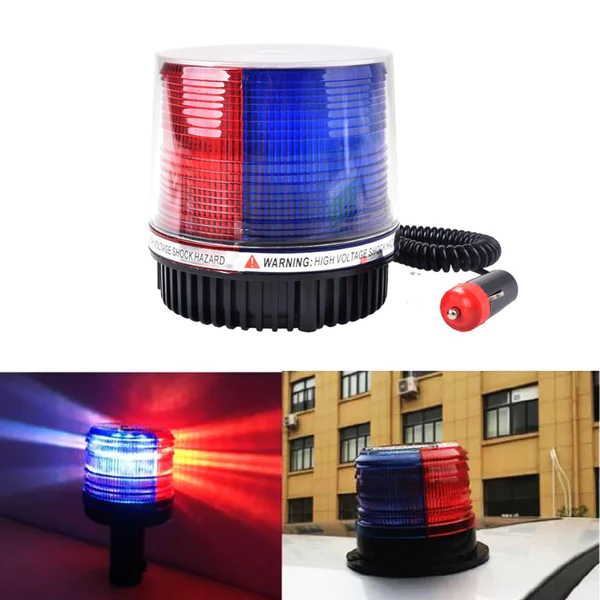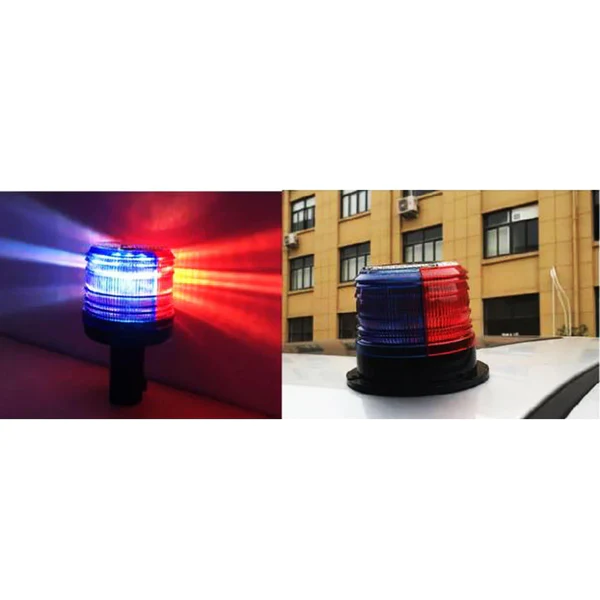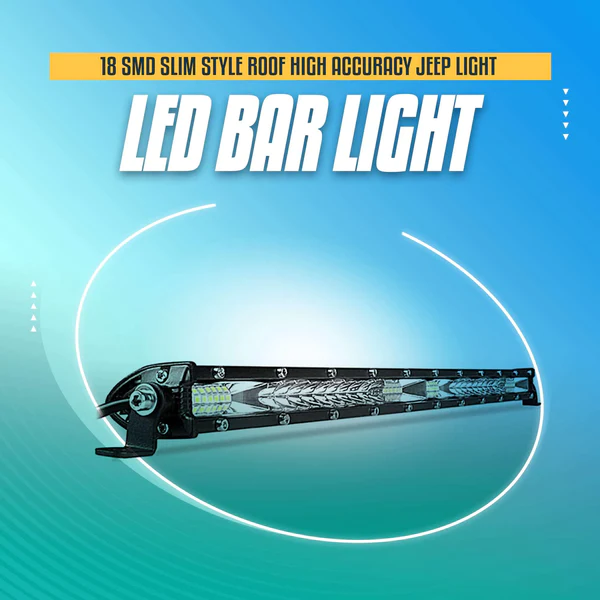Introduction:
In the world of law enforcement, one of the most iconic symbols is the flashing red and blue lights adorning the roofs of police cars. These lights serve as a warning signal, alerting motorists and pedestrians to the presence of law enforcement vehicles and signaling emergencies in progress. Over the years, the technology behind these lights has evolved significantly, from simple rotating beacons to sophisticated LED flashers. In this blog post, we’ll delve into the history and evolution of police car lights, focusing particularly on the transition from revolving beacons to LED flashers.

The Era of Revolving Beacons:
The history of police car lights can be traced back to the mid-20th century when the first revolving beacons were introduced. These beacons, typically mounted on the roof of police cars, featured rotating mirrors or bulbs that produced flashes of light as they spun. The distinctive red and blue colors were chosen for their high visibility and ability to cut through fog and other adverse weather conditions.
The revolving beacons quickly became synonymous with law enforcement vehicles, serving as a clear visual signal of authority on the road. However, despite their effectiveness, these early beacons had several limitations. They were relatively bulky and required frequent maintenance due to the moving parts involved in their operation. Additionally, the incandescent bulbs used in these beacons consumed a significant amount of power and were prone to burning out.
The Advent of LED Technology:
In the late 20th century, advancements in lighting technology began to revolutionize the design of police car lights. One of the most significant developments was the introduction of Light Emitting Diodes (LEDs). Unlike traditional incandescent bulbs, LEDs are solid-state devices that produce light through the movement of electrons in a semiconductor material.
LEDs offered several advantages over incandescent bulbs, making them an ideal choice for police car lights. They were more energy-efficient, producing brighter light while consuming less power. They also had a longer lifespan and were more durable, withstanding the vibrations and shocks associated with police vehicle operations.

The Transition to LED Flashers:
As LED technology continued to improve, police departments began transitioning from traditional revolving beacons to LED flashers. These flashers retained the iconic red and blue colors but replaced the rotating mechanism with an array of stationary LEDs. By controlling the timing and intensity of the light pulses, LED flashers could replicate the flashing effect of revolving beacons with greater precision and flexibility.
One of the key advantages of LED flashers is their versatility. Unlike revolving beacons, which were limited to a single flashing pattern, LED flashers can be programmed to display a variety of patterns and sequences. This allows law enforcement agencies to customize the flashing patterns to suit different situations, such as traffic stops, emergencies, or escort missions.
Another benefit of LED flashers is their reduced size and weight compared to traditional revolving beacons. The compact design of LED modules allows for more streamlined installations on police vehicles, reducing aerodynamic drag and improving fuel efficiency. Additionally, the lower profile of LED flashers reduces the risk of damage from low-hanging obstacles or garage doors.
The Future of Police Car Lights:
As technology continues to advance, the future of police car lights looks brighter than ever. Emerging technologies such as smart LEDs and integrated light bars offer even greater flexibility and functionality for law enforcement agencies. These advanced systems can synchronize with other vehicle systems, such as sirens and onboard computers, to provide real-time feedback and enhance situational awareness for officers on the road.
Furthermore, ongoing research into connected vehicle technology and vehicle-to-vehicle communication could revolutionize the way police cars interact with other vehicles on the road. Imagine a future where police car lights can communicate with autonomous vehicles to safely navigate through traffic or alert nearby vehicles to upcoming hazards or emergencies.

Conclusion:
In conclusion, the evolution of police car lights from revolving beacons to LED flashers represents a significant technological advancement in law enforcement equipment. LED flashers offer greater efficiency, versatility, and durability compared to their predecessors, allowing law enforcement agencies to enhance their visibility and effectiveness on the road. As technology continues to evolve, we can expect further innovations in police car lighting systems, ultimately improving safety and security for communities around the world.


